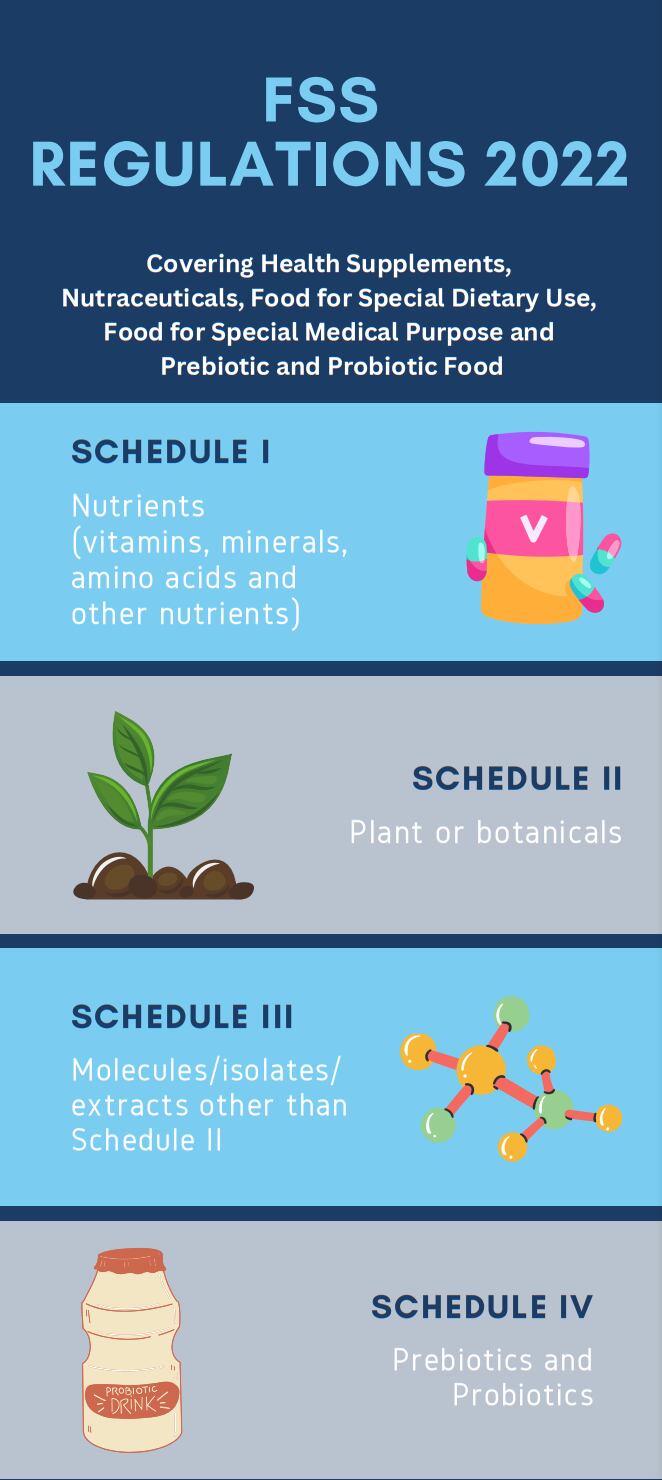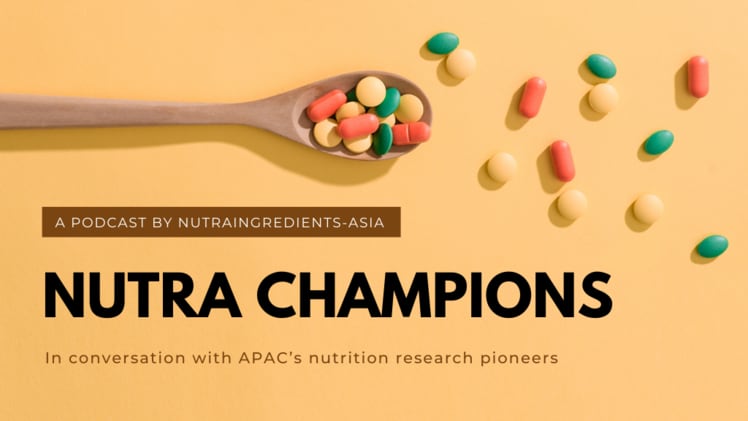Just a month ago, two Indian nutraceutical firms have received funds from Hindustan Unilever (HUL) and Singapore-based global investment firm Temasek.
Last December, HUL announced its foray into the ‘health and wellbeing’ category by investing in two companies, namely Zywie Ventures Private Limited, which is behind vegan / plant-based, clean label supplement brand OZiva and Nutritionalab Private Limited, which is behind the brand Wellbeing Nutrition.
“These strategic investments give us an entry into the fast-growing Health & Wellbeing category
“I strongly believe that HUL is well-positioned to support further scale-up of these businesses through our R&D, Market Development, Distribution capabilities and Unilever’s global Health & Wellbeing expertise,” Sanjiv Mehta, CEO and managing director, HUL said.
Also happening in last December, HealthKart, a supplement firm focusing on e-commerce, raised US$135m from A91 Partners and Temasek, a global investment company headquartered in Singapore.
This year, NutraIngredients-Asia’s VitamINSIGHTS series will zoom in on the growth opportunities and challenges seen in nine Asia-Pacific markets, with India the first market that we are looking into.
Part I: Background
As of year 2021, India boasts a massive population of 1.4 billion, on par with China.
India’s population growth is however more promising at an annual growth rate of 0.8 per cent, eight times faster than that of China, data from World Bank has shown.
Life expectancy at India is recorded at 70 years while the country’s Gross Domestic Product (GDP) hit US$3.18 trillion and GDP growth at 8.7 per cent as of 2021.
Zooming into the nutraceutical industry, a report by Niti Aayog (The National Institution for Transforming India Aayog), the premier policy think-tank of the Government of India, the sector is growing at an average rate of 12 percent per annum and is expected to reach US$ 100 billion by the year 2030.
The growth of the nutraceutical market will be driven by the rise in lifestyle diseases and the public’s awareness of preventive healthcare measures, said Pradip Chakraborty, former director at the Food Safety and Standards Authority of India (FSSAI).
“Following COVID-19 outbreak, the global nutraceutical market witnessed consistent growth as the nutraceutical provides health benefit and also boost immunity system.
“Recent innovations and findings of function specific antioxidants are expected to create new opportunities in this booming sector,” he said.
Part II: How has India’s nutraceutical category evolved and the growth opportunities
The Vitamin and Mineral Supplements (VMS) category is an area for growth opportunities and there are two key demands that consumers have for this category, namely product efficacy and whether the product is considered ‘natural’, according to Aarti Gill, co-founder of OZiva.
“There is this definite inclination towards herbal, natural products in the category and what can replace synthetic vitamins and minerals…The major important query [coming from consumers], is always whether the products would produce any side effects, and whether they need to consume the products on a longer term.”
Since starting in the industry in 2016, the company has seen the sector evolved in terms of innovations in products’ dosage formats and the expansion of the beauty-from-within and weight management product category.
“The beauty-from-within category was predominantly led by dosage formats such as tablets and capsules, and we started with health drinks and powder formats, and over a period of time, new formats, like gummies as well as effervescent are also very interesting formats that people are preferring, because they can be a part of the lifestyle, versus a capsule which is still a very medicinal format.”
On the partnership with HUL, Gill said it was crucial that both companies were aligned in vision and whether they were committed to work together for the long term. For OZiva, it is about reaching out to a 100 million customers.
To do so, the brand, which adopts a digital-first strategy and sells its products on its website and online marketplaces, would need to expand its offline retail channels.
“E-commerce penetration in India is still in very low single digits. If you have to reach out to a larger population, it's about the opening up of new retail channels,” Gill said.
According to a November 2022 report by India Brand Equity Foundation (IBEF) – an initiative of India’s Ministry of Commerce and Industry, Indian e-commerce is projected to increase from 4 per cent of the total food and grocery, apparel and consumer electronics retail trade in 2020 to 8 per cent by 2025.
Under the partnership, HUL will acquire 51 per cent equity stake through a combination of primary infusion and secondary buyouts. The balance 49 per cent will be acquired at the end of 36 months, based on pre-agreed valuation criteria.
The current OZiva team led by Gill and Mihir Gadani will continue to operate all functions of the business, while HUL will have representation on the Board and will provide necessary capabilities and support to scale up.
Specifically, the partnership with HUL would allow OZiva to tap on the former’s offline retail and marketing expertise, while OZiva, with its innovations could help HUL strengthen its health and wellbeing category.
“There are great products that we have built over the last few years, and we have seen great growth digitally.
“As we expand, it became much their [HUL] expertise of market development plus the offline channel expertise that they have, and along with our expertise [in product development], I think that's where the perfect marriage is,” Gill said.
The three key health concerns
Gill has identified three health concerns that are or would be on top of mind for consumers in time to come.
First is beauty-from-within, where most consumer concerns surround the area of hair and nail health, as well as skin glow, pigmentation, anti-ageing, and acne.
“There are growing problems around beauty concerns, anything related to hair and skin, if you look at how the country has evolved.
“Initially, when I talk about hair health and skin health, you have all the external solutions out there. What about beauty-from-within? What are the kinds of nutrition that you need to consume to handle those concerns? I think that's one of the big areas that we see is evolving in the country.”
Second on her list is helping consumers address their sleep and stress concerns.
“Another interesting area is sleep aids, where there are a lot of searches around sleep and stress.
“Although [such supplements] have not come into the buying consumption pattern of the consumers, we see that as the next important thing that will evolve in the country.”
Indeed, earlier in January, P&G Health introduced its Vicks ZzzQuil Natura melatonin sleep aid gummies into India.

Coming in either a bottle of 10 or 24 strawberry lavender flavoured gummies, each piece of gummy consists of vitamin B6, chamomile, aside from two grams melatonin.
During the launch, P&G Health also unveiled the findings of a sleep pattern survey conducted with Kantar.
Out of the 2,236 respondents from seven Indian cities, 60 per cent said they suffered from occasional sleeplessness. Only 15 per cent of said they had a good sleep at night.
Third is the rise of the sports nutrition category, Gill said.
“There is a growing interest in sports, and so hydration could become a key part of the portfolio or the category as we go into the future.”
As for immunity, she noticed that demand have flatlined, although the demand would still be higher than pre-pandemic levels.
“We have seen a declining interest in immunity, and I think that's a trend across the country.
“The base of the immunity category may be higher than pre-COVID, but I think there has been a declining growth in that category.”
Watch the following video to find out more.
Mitigating market gaps
Elaborating on market gaps, Gill said the major issue was that most Indian consumers would start using nutraceuticals only when they have a health problem.
“So far, the way the consumers in the country predominantly start consumption of these supplements is only when they have a problem. In general, it [taking supplements] has not become a part of their lifestyles.”
Chakraborty concurred with this point, saying that more needs to be done to promote the value of nutraceuticals.
“Public awareness about nutraceuticals among the common consumers in India is not high, to be very frank.
“The government must be influenced to reshape perception of nutraceuticals as valuable tools to address unmet health needs. Strong relationship needs to be established with doctors and pharmacists to convince them of the value of nutraceuticals,” he said.
Consumer retention is also another area of challenge, since the benefits of taking nutraceuticals could only be seen after a period of consumption.
“One of the biggest challenges is retention, and unlike an application product where you apply, where you can smell it, or it gives you good feeling immediately, nutrition is not like that.
“There is a duration for you to take in the product, you need to be on that journey, it's about habit creation and that is where you start seeing better results on your body. It’s about longer-term thinking.”
“The second thing is people still have this intrinsic feeling on whether a supplement could be harmful to me, would this have side effects, is it something that I can take in the longer term and I think that's one of the things that we need to address,” Gill said.
Part III: Must-know regulations
Last year, the FSSAI published FSS (Health Supplements, Nutraceuticals, Food for Special Dietary Use, Food for Special Medical Purpose and Prebiotic and Probiotic Food) Regulations 2022.
It contains four schedules containing approved ingredients as applicable to different categories of foods.

Probiotics product, for example, must contain one billion viable colony forming units (CFU) before it is considered a probiotic by the FSSAI.
Products which contain ingredients not specified in the schedule are rejected by the FSSAI, that means your formulation must contain the ingredients specified in the schedule.
“A specific example is a health supplement containing methyl-cobalamin, are not permitted by the FSSAI. It is a salt of vitamin B12.
“Only cyano-cobalamin and hydroxo-cobalamin as salts of vitamin B12 are permitted in our schedule 1 regulation,” said Chakraborty.
Companies hoping to export nutraceuticals that contain ingredients that are not listed in the schedules will need to apply for pre-approval from the FSSAI – a process which will take at least six months – around three times longer than products that do not contain ingredients not specified in the schedules.
This regulator will then assess the product based on the Food Safety and Standards (Approval of non-specified food and food ingredients) Regulations, 2017.
“On the basis of that, FSSAI either approve or reject the regulations. If it's approved, then it will be permitted to export the product into India,” he said.
The regulations, though operationalised, is still at the draft state and is therefore, not the final notification, he emphasised. This means that stakeholders can still offer comments about the proposed regulations.
“The authorities have operationalised the regulations to facilitate the ease of doing business. We cannot stop the business just because our regulations are not yet operationalised,” he said.
Another area for companies to take note of, is the Recommended Dietary Intake (RDI) of their products.
In year 2021, the FSSAI published the RDA 2020 guidelines for nutraceuticals and the rules will come into force from July this year.
Products that contain RDA levels within the FSSAI’s guidelines can be sold OTC as supplements. However, products which exceed the RDA level will be categorised as drugs and can only be available via doctors’ prescription.
With a large population of vegetarians, helping consumers identify the vegetarian-friendly products is another key aspect of nutraceutical regulations in India.
To differentiate products that are vegetarian and non-vegetarian, products that fall in the former category are represented by a green symbol and the latter by a brown symbol.
“Indians are very religious. Around 70 per cent of the Indian population are vegetarians, and so the labelling regulation is very important. The green logo means that all ingredients are from vegetarian sources, while brown means that one or more of the ingredients may contain non-vegetarian sources.”
The regulatory challenges
One of the major regulatory constraints in India, is the approval of novel ingredient used in nutraceuticals.
At the moment, a novel ingredient that is to be exported to India for use in nutraceuticals have to be documented a history of safe use for at least 30 years in the country of origin or 15 years, if the ingredient comes from India.
In contrast, new drug registration with the Drugs Controller General of India will take a maximum of four years, which Chakraborty said should be the standard that nutraceuticals should adopt.
Drugs are more sensitive than food, so if they are only considering four years for drugs, why should FSSAI consider 15 or even 30 years for food? Thirty years is a long time. Most of the nutraceuticals in the world are new.
Thus, he has wrote in to the FSSAI to bring down the requirement to four years, in response to FSSAI’s public consultation of FSS regulations 2022.
On the other hand, he added that although India is a member of the CODEX Alimentarius Commission, the country did not adopt the CODEX guidelines in toto.
“For dietary supplements, FSSAI follow ICMR-NIN (Indian Council of Medical Research – National Institute of Nutrition) guidelines, particularly in case of RDA for vitamins, minerals, amino acids and enzymes which are different in different countries.
“If FSSAI standards are not available, FBOs can follow CODEX standards and other international standards,” he added.
Companies that want to register novel ingredients with the FSSAI will need to provide information such as risk of analysis and toxicity studies.
If the toxicity studies information provided is insufficient, these ingredients will be rejected by the FSSAI, and the list of such ingredients could be found on the website.
Nonetheless, if more toxicity studies on the ingredient is available, companies can still attempt to apply for the novel ingredient status with the FSSAI, Chakraborty said.





